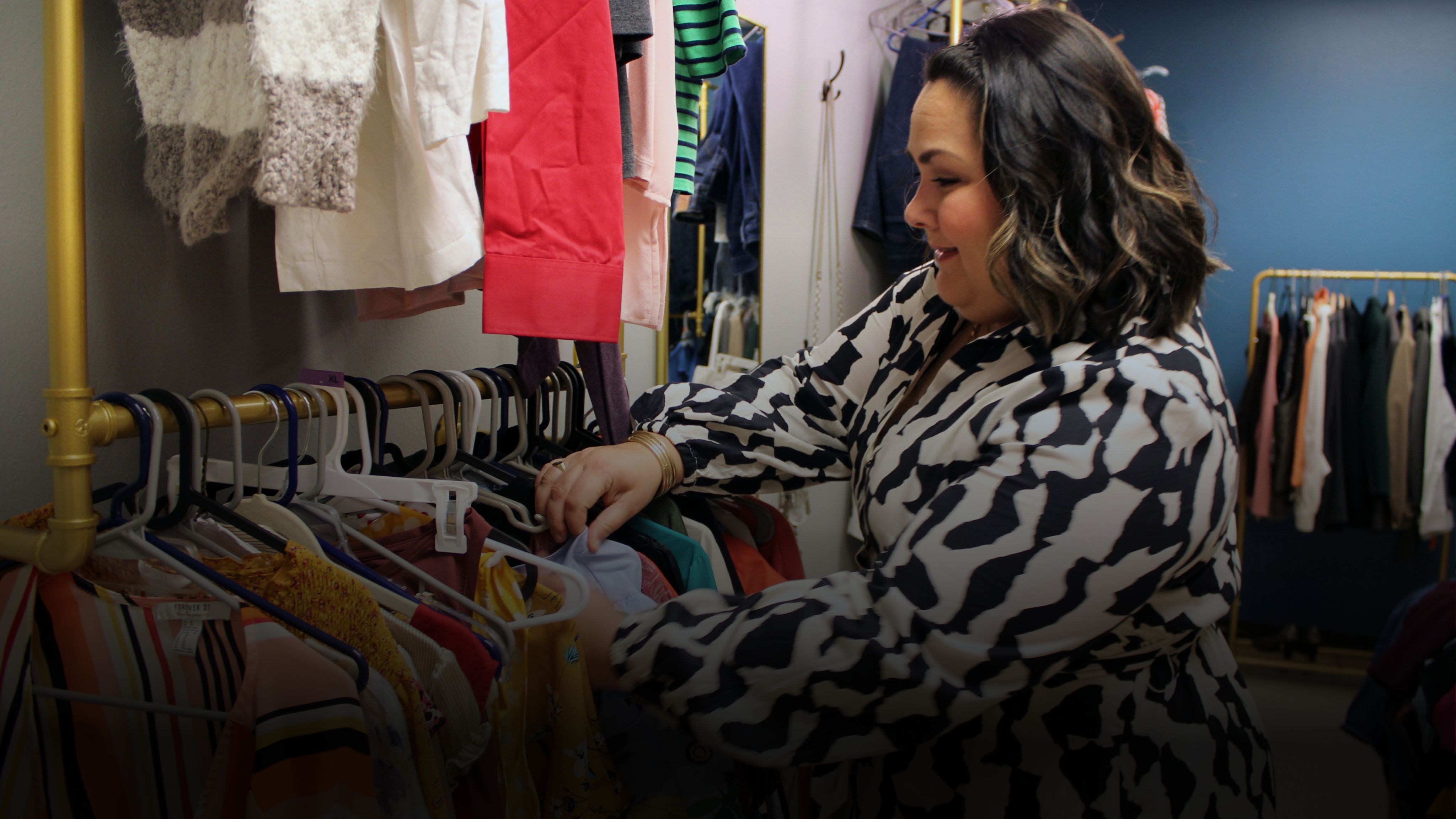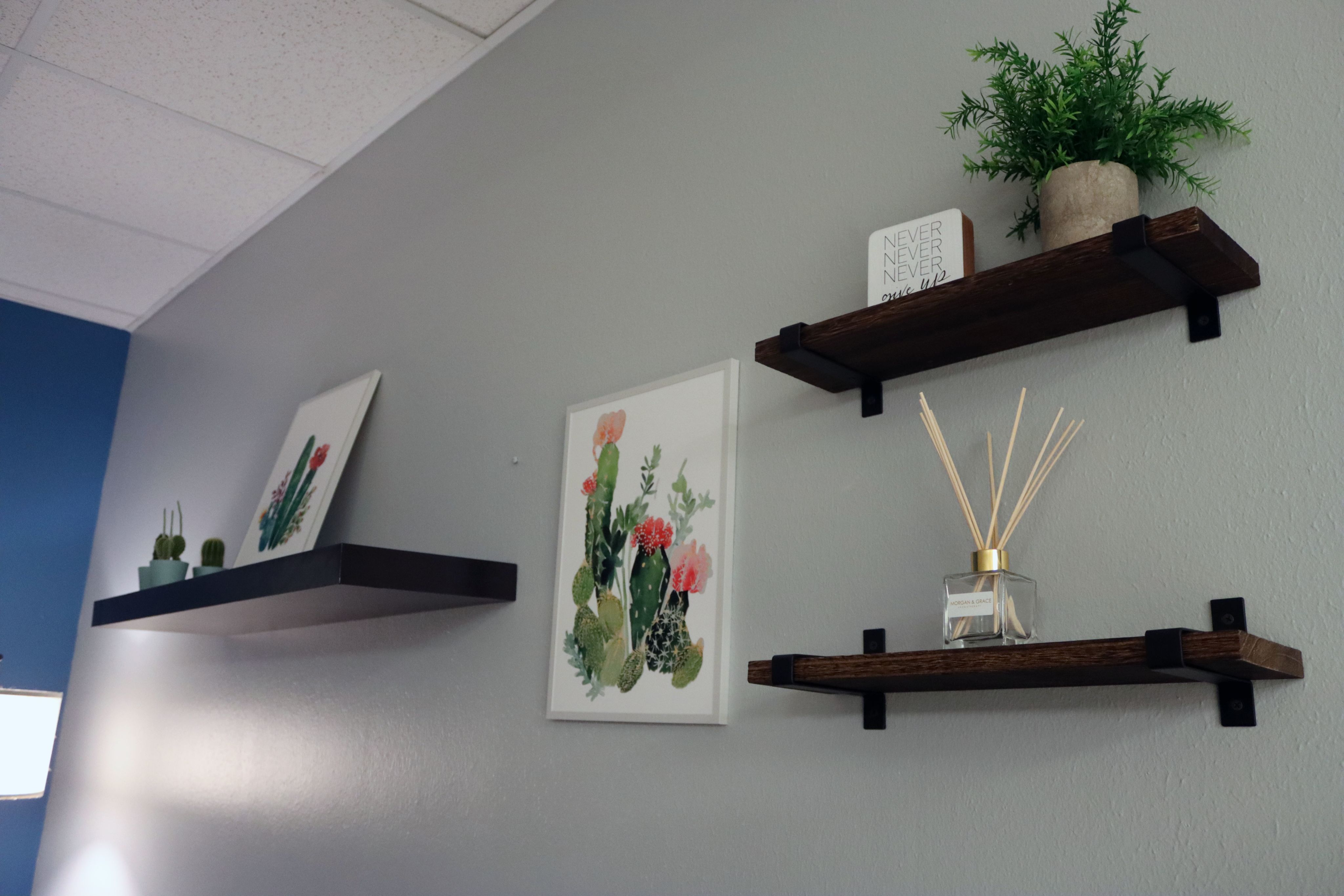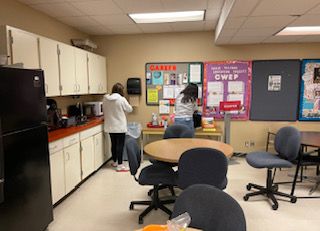Designing with Intention
GCSW Alumna, Erica Solis, transforms spaces in the GCSW through a decolonized lens

After experiencing trauma and microaggressions in classes and her first practicum, GCSW alumna Erica Solis began advocating for a racial/ethnic affinity space within the college. From there, Radical Connections (RadCo) was established.
As Solis continued to work with RadCo, she had the opportunity to do her practicum at the GCSW as the first MSW intern at the Office of Admissions and Student Affairs. That's when the work first began.
"There were so many levels to it. I began working on building community, which is not only important to me, but I know research shows that it's important for the continued success of many BIPOC students in K-12 education and higher Ed," said Solis.
"I noticed a gap in what the GCSW promoted in its mission and values and the actual physical spaces students were expected to learn within. I started to think about my new placement [Office of Admissions and Student Affairs], and under Dr. Amber Mollhagen, I was able to show up as my authentic self and the difference it made in my learning. I began to ask, how are students expected to feel encouraged to learn and show up as their authentic self when these same spaces leave them out of the conversation. Where is the representation? Where was the meaningful engagement?"
- Erica Solis

Transforming the Student Lounge
The transformation started with Solis asking if she could transform the "underutilized space" in the Student Lounge and if GCSW could have a community closet. People thought it was a great idea, but they were still waiting for someone to know the answer to her questions.
Using her social work skills and networking, Solis started her research by seeing if other colleges on campus were doing something similar and setting up meetings. She also made presentations to pitch her ideas to her office teams. From here, she was given the green light and began bringing to life The SHINE Community Closet.
GCSW students, faculty, and staff can donate clothes, shoes, and house items. They are also able to take things at no cost.
"When we talk about social justice, we talk about environmental justice. [Through this closet, we are] repurposing clothes. We are helping students . . . [may it be for] job interviews, internships, or just because. Instead of the clothes going to landfills," said Solis. "I hope it also plants a seed of our footprint on the land and the earth because all these rooms have a decolonized lens approach. Our relationship, for me, with the land and the earth is sacred. It's intimate. That's the legacy [I hope gets created] behind The SHINE Community Closet here, at least at the GCSW."
Solis began transforming the student lounge with a decolonized view.
"If you look around the room, you'll see the nopales, the colors, the earth, and the wood. So that was all intentional. You'll also see Angela Davis, Frida Kahlo, etc. I think that was intentional, purposeful, "said Solis. "The asking of why? Why do we have these images here? And it's that unlearning and then the relearning of history, stories, and hopefully introspection. What is the symbolism behind the cactus? There's a reason why those were chosen."
" The transformations of the rooms touch on so many areas that are important to social workers and the work we do, such as all the 'isms- racism, ageism, ableism, neurodiverse students, body affirming & LGBTQIA2+ spaces, etc. It really is more than just picking a color or buying a new sofa chair. It must be intentional spatial design for social justice. Furthermore, the application of decolonization into these spaces must also be intentional as to not be performative or contribute to stereotypes...it is an ongoing journey, a connection to mother earth that never ends," Solis said.
- Erica Solis

To bring all this to life, Solis had volunteers' help and support, including the Veterans Systems Communication, VSC TECH, a local Latino/Veteran-owned small business.
"They provided and continue to provide countless volunteer hours and sweat equity in helping me bring my designs to life, from hanging light fixtures to painting cabinets and counters, removing furniture, carrying, lifting, assembling, and smiling the whole time," said Solis.
A lot of work has gone into transforming these spaces within the GCSW; it's an experience that Solis has loved. Her goal is for these rooms to encompass a sense of belonging, representation, critical thinking, identity, motivation, hope, and inspiration.
"Design (in particular interior design) won't 'save' the world. But what it does have the power to change is perspectives, conversations, and empower, which inevitably has the effect of changing the world," said Solis.










